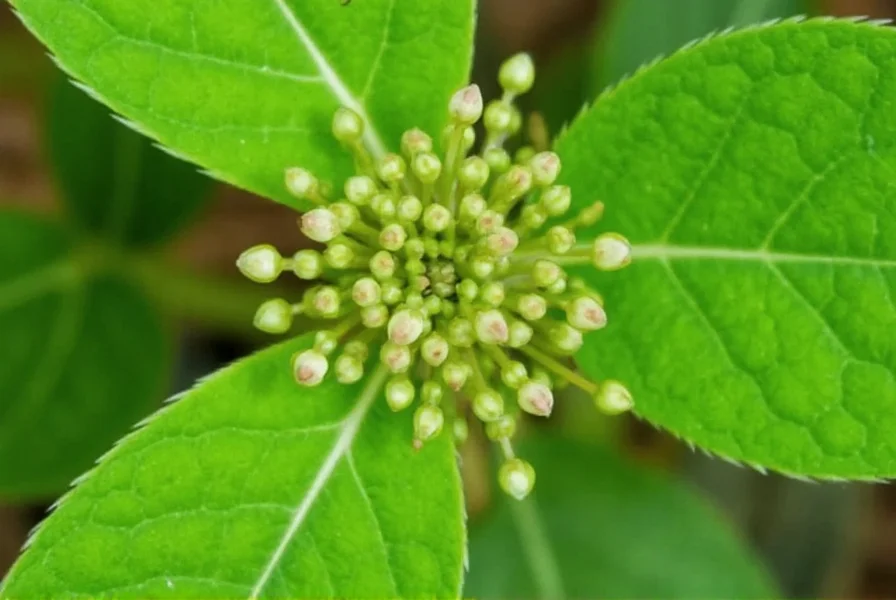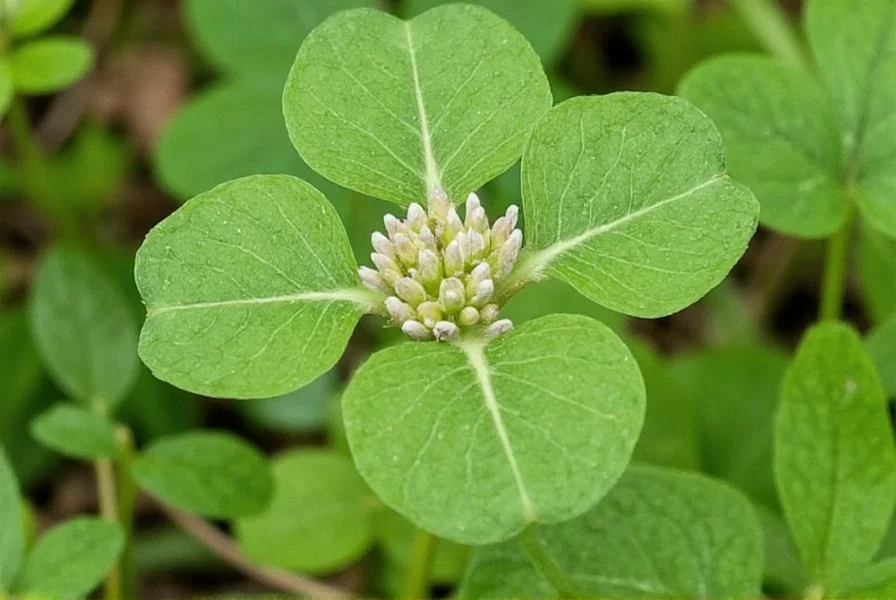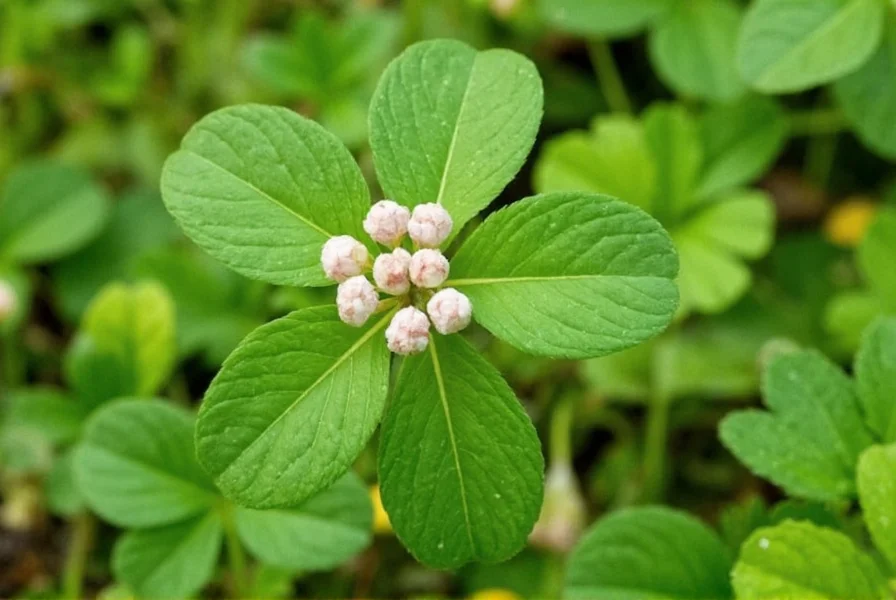Burr clover, scientifically known as Medicago polymorpha, serves as both a valuable cover crop and common lawn inhabitant across temperate regions. This adaptable plant thrives in disturbed soils, roadsides, pastures, and even well-maintained lawns, demonstrating remarkable resilience in various soil conditions. Understanding how to identify burr clover and its ecological role helps gardeners and land managers make informed decisions about its presence.
Botanical Characteristics for Accurate Identification
Proper identification of burr clover prevents confusion with similar-looking plants. Key distinguishing features include:
- Leaves: Trifoliate arrangement with oval leaflets featuring fine teeth along edges
- Flowers: Small yellow blooms appearing in clusters of 2-5 during spring
- Seed pods: Unique coiled structure with small hooks (burs) that cling to surfaces
- Growth habit: Prostrate, spreading form reaching 6-18 inches in height
- Root system: Taproot with nitrogen-fixing nodules
When learning how to identify burr clover, note that its seed pods start green and mature to a dark brown color. The "burr" characteristic gives the plant its common name and facilitates seed dispersal through animal and human contact.
Ecological Benefits and Agricultural Value
Burr clover offers significant advantages in sustainable land management. As a nitrogen-fixing legume, it naturally enriches soil fertility without synthetic fertilizers. This makes burr clover particularly valuable in organic farming systems and low-input pastures. Livestock readily consume the plant during its vegetative stage, providing high-protein forage before the burs develop.
| Benefit | Explanation |
|---|---|
| Nitrogen fixation | Adds 50-100 lbs of nitrogen per acre naturally |
| Drought tolerance | Requires less water than traditional turf grasses |
| Soil improvement | Prevents erosion and enhances soil structure |
| Pollinator support | Attracts bees and other beneficial insects |
Gardeners increasingly recognize burr clover as a sustainable lawn alternative. Unlike traditional turf grasses, burr clover requires minimal mowing, tolerates foot traffic, and stays green longer during dry periods. Many homeowners researching is burr clover good for lawns discover its low-maintenance advantages compared to conventional grass options.
Differentiating Burr Clover from Similar Species
Accurate identification prevents mismanagement. The burr clover vs black medic comparison reveals important distinctions. While both belong to the legume family, black medic (Medicago lupulina) features smaller, oval seed pods without the characteristic hooks of burr clover. White clover (Trifolium repens) has white or pink flowers rather than yellow and lacks the coiled burs.
Understanding burr clover life cycle helps with management decisions. As an annual plant, it germinates in fall or early spring, flowers in late spring, sets seed in early summer, and dies with summer heat. This knowledge informs timing for both preservation and control measures.
Management Considerations for Homeowners and Farmers
While burr clover provides numerous benefits, some situations may require control. The decision to manage burr clover depends on context. In agricultural settings, burr clover control methods differ based on whether it's serving as a cover crop or competing with cash crops.
For homeowners wondering is burr clover toxic to dogs, research indicates it's generally safe for pets when consumed in moderation. However, the mature burs can cause discomfort if they become embedded in fur. Those considering burr clover for pasture should note that while livestock readily consume young growth, the mature burs may cause mouth irritation if consumed in large quantities.
Natural management approaches include:
- Mowing before seed set to prevent spread
- Improving soil fertility to encourage competitive grasses
- Using targeted hand removal in small areas
- Planting competitive ground covers
Chemical control is rarely necessary and generally discouraged due to burr clover's beneficial properties. When evaluating burr clover control methods, consider whether complete elimination is truly needed or if coexistence might provide ecological benefits.
| Management Goal | Recommended Approach |
|---|---|
| Preserve in pasture | Mow after flowering but before seed maturity |
| Reduce in lawn | Improve soil fertility and overseed with competitive grasses |
| Prevent spread | Remove plants before burs develop |
| Encourage in garden | Allow to grow as living mulch between vegetable rows |
When considering burr clover benefits in agricultural systems, research shows it improves soil health while providing supplemental forage. Its ability to thrive in poor soils makes it particularly valuable for land restoration projects. The plant's shallow root system works well as a cover crop without competing excessively with deeper-rooted plants.
Seasonal Growth Patterns and Optimal Conditions
Burr clover demonstrates specific seasonal patterns that influence management decisions. When does burr clover bloom? Typically from April through June in most temperate regions, depending on local climate conditions. The plant establishes quickly in fall or early spring when soil moisture is adequate.
Optimal growing conditions include:
- Full sun to partial shade
- Well-drained soils (tolerates various soil types)
- Moderate moisture (drought-tolerant once established)
- Cooler temperatures (growth slows during summer heat)
Understanding these patterns helps determine whether burr clover will persist as a desirable component of your landscape or require management intervention.

Practical Applications in Sustainable Landscaping
Modern landscaping increasingly incorporates burr clover as part of eco-friendly designs. Its low-growing habit and nitrogen-fixing properties make it ideal for pathways, between stepping stones, and as a lawn alternative. Homeowners seeking sustainable gardening solutions often discover burr clover provides attractive ground cover with minimal maintenance requirements.
When evaluating burr clover for pasture applications, note that it provides high-quality forage during spring months but becomes less palatable as the burs develop. Rotational grazing systems maximize its benefits while preventing overgrazing. In agricultural settings, burr clover serves as an excellent cover crop that suppresses weeds while improving soil fertility.

Conclusion: Balancing Benefits and Management
Burr clover represents a classic example of a plant that transitions between beneficial cover crop and nuisance weed depending on context. Rather than automatically seeking elimination, consider whether coexistence might provide ecological benefits. Its nitrogen-fixing capabilities, drought tolerance, and value as pollinator habitat make burr clover a valuable component of sustainable landscapes when properly managed.
By understanding burr clover characteristics and growth patterns, land managers can make informed decisions about whether to encourage, tolerate, or manage this versatile plant. The key lies in matching management approaches to specific land use goals rather than applying blanket treatments.
Frequently Asked Questions
Is burr clover the same as black medic?
No, burr clover (Medicago polymorpha) and black medic (Medicago lupulina) are related but distinct species. Burr clover has coiled seed pods with small hooks that cling to clothing and animal fur, while black medic produces small, oval, non-burred seed pods. Burr clover flowers are typically brighter yellow and it has a more prostrate growth habit compared to black medic.
Does burr clover harm lawns or gardens?
Burr clover generally doesn't harm lawns and can actually improve soil health through nitrogen fixation. In gardens, it may compete with desired plants for space, but many gardeners use it as a living mulch between vegetable rows. The primary concern is its burred seed pods which can attach to clothing and pet fur. In most cases, burr clover coexists well with turf grasses and provides drought tolerance benefits.
When is the best time to control burr clover?
The optimal time for burr clover control is before seed set, typically in late spring before the burs mature. For natural management, mow plants when they begin flowering but before seed pods develop. In lawns, improving soil fertility and overseeding with competitive grasses in fall can naturally suppress burr clover. Complete eradication is rarely necessary as burr clover is an annual that dies with summer heat.
Is burr clover safe for pets and livestock?
Yes, burr clover is generally safe for both pets and livestock when consumed in moderation. Livestock readily eat young burr clover as high-protein forage. The primary concern comes from mature burred seed pods, which can cause mouth irritation if consumed in large quantities or become embedded in animal fur. Unlike some look-alike plants, burr clover doesn't contain toxic compounds that would harm animals under normal grazing conditions.
Can burr clover be used as a lawn alternative?
Yes, burr clover makes an excellent low-maintenance lawn alternative. It tolerates moderate foot traffic, requires less mowing than traditional turf grasses, stays green longer during dry periods, and naturally fertilizes the soil through nitrogen fixation. Many homeowners create clover lawns by overseeding existing grass with burr clover or establishing it as a standalone ground cover. It typically grows 3-6 inches tall and produces attractive yellow flowers in spring.











 浙公网安备
33010002000092号
浙公网安备
33010002000092号 浙B2-20120091-4
浙B2-20120091-4